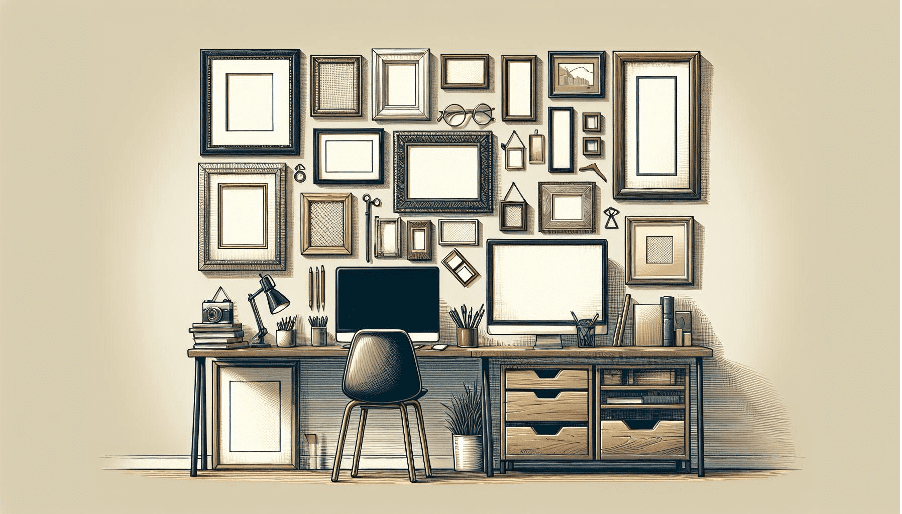
When it comes to designing a workspace, the details can make all the difference. Among these, selecting the right frames and posters is not merely a matter of decoration but a crucial element in defining the space’s character and the ambiance it exudes. It’s about more than aesthetics; it’s about making a statement, reflecting personal or professional values, and even influencing the mood and productivity of those within the space. The right frame can transform an ordinary room into a source of inspiration and motivation.
But what makes a frame the “right” frame? It’s a combination of factors—style, material, size, and the artwork it holds—all of which must harmonize with the room’s existing decor and the message you wish to convey. This decision-making process is foundational, setting the tone for your workspace in a way that goes beyond simple decoration.
Understanding the impact of visual elements
The influence of visual elements in a workspace extends far beyond mere aesthetics. Color theory, for instance, teaches us that different colors can evoke different emotions and behaviors; blue can induce calmness and focus, while yellow might inspire creativity. The imagery we surround ourselves with can have a profound psychological impact, affecting our day-to-day mood and productivity.
Pairing the right frame with the right poster is an art in itself. It’s about creating a cohesive environment that not only looks good but feels right. This synergy can boost morale, inspire innovation, and foster a sense of belonging among employees. It’s a subtle yet powerful way to enhance the workspace, making it more than just a place to work, but a source of constant motivation and inspiration.
The psychological influence of art in workspaces
Art in the workplace does more than just fill empty walls; it can significantly affect employees’ mental health and productivity. Studies have shown that art, whether in the form of posters, paintings, or sculptures, can reduce stress, increase creativity, and improve overall job satisfaction. When individuals are exposed to art that resonates with them, it can trigger positive emotional responses, such as joy or calmness, which in turn can enhance their ability to think creatively and solve problems more efficiently.
Moreover, art can serve as a non-verbal form of communication, conveying messages and values that words alone cannot. It can reflect a company’s identity, culture, and aspirations, fostering a sense of pride and belonging among employees. By carefully selecting art that aligns with the company’s values and the employees’ interests, employers can create a more engaging and inspiring work environment.
The role of art in fostering company culture
Integrating art into the workplace goes beyond aesthetics; it plays a crucial role in building and reinforcing company culture. Art can be a tool for storytelling, sharing the company’s history, achievements, and vision for the future in a visually engaging way. It can also highlight the company’s commitment to creativity, innovation, and social responsibility, depending on the themes and artists chosen.
Furthermore, involving employees in the selection process of art can empower them and give them a voice in shaping their work environment. This collaborative approach not only enhances the personal connection employees have with their workspace but also promotes a culture of inclusivity and respect for diversity. As a result, art becomes not just a decorative element but a catalyst for building a stronger, more cohesive company culture.